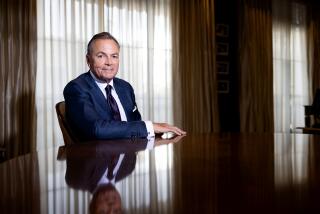L.A.’s screen-star mayors
- Share via
Hollywood, as much of the world does not realize, is merely a neighborhood within the city limits of Los Angeles. It hasn’t been its own city for 103 years, and yet it’s the tiny, glamorous tail wagging the city’s workaday dog, which is all of the millions and hundreds of square miles of the rest of us.
Still, it’s a bit of a surprise that L.A. politics and Hollywood have had so little crossover. Tuesday’s city election might bring Los Angeles its first chief executive who’s been a Hollywood industry executive. Wendy Greuel, as my colleagues Seema Mehta and Maeve Reston pointed out, is a former DreamWorks official.
Ah, but as for mayors who’ve been on the other side of the camera, that is a much longer list.
Eric Garcetti owns a black-and-gold SAG-AFTRA membership card for his TV roles, playing himself on the soap “All My Children” but also playing “Mayor Ramon Quintero” on the award-winning TV police drama “The Closer.” Once, he played the mayor to his father’s “police chief.” Former Dist. Atty. Gil Garcetti was also a consulting producer on“The Closer.”
There is lots of Hollywood money in this race, probably more than an L.A. mayor’s race usually attracts, and “The Closer” creator/writer/producer/director James Duff gave $25,000 to Garcetti’s campaign.
L.A.’s mayors have gone on television for about as long as there’s been television, and not just to debate or defend their policies in news interviews. Mayor Fletcher Bowron’s big TV gig was a 1953 guest shot playing himself on George Burns and Gracie Allen’s TV show, an episode called “The Tax Refund.” The Times quoted the show’s producers as saying the role he played was dignified and that “he’s a very good actor.”
And here’s a switcheroo: In 1961, Bowron’s successor, Norris Poulson, lost his third bid for the mayor’s job because he couldn’t pull off a TV appearance. He’d been invited to defend the Dodgers deal on a local TV show against his challenger, Sam Yorty, but Poulson had laryngitis, and Yorty beat him. Poulson’s voice never did recover.
Yorty, for some reason, was a favorite of Johnny Carson’s, maybe because they were both Nebraskans. As mayor, Yorty showed up playing banjo on Carson’s show a couple of times. He also played himself in the knife-edge Robert Redford political parody, “The Candidate,” showed up once on “Laugh-In” and, in 1961, on “What’s My Line?”
That last gig was a couple of months before Yorty was elected mayor. And the panel wasn’t even blindfolded, which suggests dispiritingly that the mayor’s job was such a cipher that the man who was about to take that role was still anonymous.
After Yorty was beaten by Tom Bradley in 1973, he hosted “The Sam Yorty Show” on KCOP, its guests and point of view so conservative that some viewers challenged KCOP’s FCC license because of it.
But the flashiest Hollywood mayor had to be Charles Sebastian, a pretty-boy former police chief who resigned the mayor’s job in 1916 after his lurid love life wound up in court -- and whose career became a fantasy version onscreen, “The Invisible Government.”
The Times’ stories, complete with photos, date the movie release as 1917. One Times account has Sebastian not only appearing in the movie -- a seven- or eight-reel account of booze, political graft and Sebastian’s heroic police role in Chinatown’s conflicts -- but showing up at screenings to give speeches.
“An interesting romance of politics and the underworld around the life of the former mayor of Los Angeles,” director H.G. Stafford promised. (Another account lists the director as one Oscar Eagle.) As one Times headline read, “We shall see.”
Just like politics.
ALSO:
Superman, hero with staying power
Video interviews with mayoral candidates
The Times endorsements, once more with feeling
More to Read
A cure for the common opinion
Get thought-provoking perspectives with our weekly newsletter.
You may occasionally receive promotional content from the Los Angeles Times.











